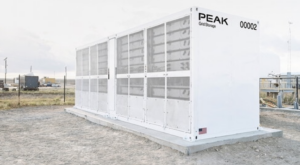A settlement over alleged Clean Air violations reached by the Environmental Protection Agency and the Justice Department with Northern Indiana Public Service Co. (NIPSCO) requires the Merrillville, Ind.–based company to shut down a coal plant while investing about $600 million in pollution control technology at the other three plants in its 3,300-MW coal-fired fleet. In related news, Ameren Missouri strongly disputed similar allegations made in a lawsuit over modifications at a 1,200-MW Missouri coal plant.
The settlement follows a Notice of Violation issued by the EPA in 2004 alleging that NIPSCO modified a number of its coal-fired power plant units without first complying with Clean Air Act New Source Review (NSR) preconstruction obligations. The obligations included obtaining preconstruction permits and installing and operating pollution control technology.
NSR provisions require electric utilities to undergo preconstruction review for environmental controls if the utilities propose to build new generating units. The provisions ordained by the federal Clean Air Act also apply if utilities modify their existing units by making certain types of non-routine physical or operational changes that result in a significant increase in emissions.
Under the consent decree reached last week, the federal agencies secured injunctive relief from all of NIPSCO’s coal-fired power plants, including the 604-MW Bailly Station in Chestertown, Ind.; the 540-MW Michigan City Station in Michigan City, Ind.; and the 1,943-MW R.M. Schahfer Station in Wheatfield, Ind.
According to the EPA, compliance with the settlement—which will cost the company $600 million—will reduce nitrogen oxide and sulfur dioxide emissions by about 64,000 tons per year from 2008 levels. The settlement also requires permanent retirement of the 384-MW Dean H. Mitchell Station in Gary, Ind. The first of the plant’s three units was built in 1958 and the last in 1970.
The settlement also calls for installation of three new flue gas desulfurization (FGD) systems at Schahfer 14, Schahfer 15, and Michigan City 12 as well as upgrades to existing FGD systems at Bailly Station Units 7 and 8, and Schahfer Units 17 and 18. NIPSCO will also be required to upgrade existing selective catalytic reduction systems at Bailly Station, Michigan City 12, and Schahfer 14 to achieve and maintain separate emissions rates, one on a 30-day rolling average basis and the other on a 365-day rolling average basis. Other requirements call for installation and continuous operation of selective non-catalytic reduction at Schahfer 15.
NIPSCO will also spend $9.5 million on environmental mitigation projects and pay a civil penalty of $3.5 million, the federal agencies said. The state of Indiana has been involved in the development of this settlement and is a signatory.
The settlement lodged Thursday in the U.S. District Court for the Northern District of Indiana is subject to a 30-day public comment period and final court approval.
NIPSCO told POWERnews on Thursday that many investments required by the settlement are “already planned or completed through NIPSCO’s proactive environmental improvement strategy.” Noting that it was one of more than 50 U.S. electric companies receiving a Notice of Violation from the Justice Department since 1998, NIPSCO also said that the company has since 1990 invested nearly $350 million to cut NOx and SOx emissions by 70%. After investing $600 million over eight years as required by the settlement, the company would have “among the cleanest coal fleets in the state,” NIPSCO added.
In related news, Ameren Missouri “strongly” disputed a lawsuit filed by the Justice Department on Thursday on behalf of the EPA alleging that the company had violated NSR provisions when it modified its 1,200-MW Rush Island coal-fired power plant in Missouri between 2001 and 2002. The lawsuit followed a Notice of Violation issued by the EPA in January 2010 for the 1976-built coal-fired plant.
“The NSR program does not apply to projects that constitute routine maintenance,” the Ameren subsidiary said in a statement on Thursday, adding that all the Ameren Missouri projects fell into the category of routine maintenance. These included project repair and replacement activities; projects that did not cause an emissions increase; projects that were necessary to respond to demand growth on a utility system; and modification projects to switch plants to low-sulfur coal, which provided environmental benefits.
“Ameren Missouri’s overall emissions are trending down, not up, while customers’ demand for electricity has increased by 50 percent since the 1990s,” it said. “The company operates its system to meet the generation demands and needs of its customers.”
Ultimate resolution of this litigation could take “several years” the company noted, and it has the “potential to impose significant costs on Ameren customers, especially during these tough economic times.”
Ameren Missouri Vice President of Power Operations Mark Birk said that the company’s commitment to supply “affordable, safe, reliable energy” to customers could be jeopardized by the EPA’s actions. “Clearly this becomes very difficult when onerous regulation and lawsuits, like this one, make existing generation much more expensive to operate and create greater uncertainty in planning for our customers’ energy needs in the future," he said.
Ameren’s cause was taken up by Sen. Roy Blunt (R-Mo.), who reportedly lambasted EPA Administrator Lisa Jackson in a letter obtained by the St. Louis Post Dispatch.
“It would not be difficult to draw the conclusion that this recent lawsuit is another backdoor method used by the EPA to broadly penalize the use of coal in the United States," the newspaper quoted from Blunt’s letter. "To the extent that the EPA’s efforts to deter the use of coal through executive fiat are furthered through the lawsuit against Ameren and its modification program at the Rush Island plant, I intend to closely examine the motives behind this legal action."
Sources: POWERnews, EPA, DOJ, NIPSCO, Ameren Missouri, St. Louis Post Dispatch








